First of all, an apology to my readers! I have not posted in over six months and the reasons for this are varied. I have always promised to share my experiences with respect to services (water and sewer, mechanical, plumbing, electrical, etc.) because that is the fourth leg of the Sustainable House – after orientation, insulation and air tightness. Without it, the sustainable table is not just wobbly, it simply isn’t anything you can sit down to.
I attempted to write about services a number of times, but as the project neared completion, I realized that it was pointless for me to share the experience with you until everything was working according to plan and until I personally gained competence as an operator. There were a number of setbacks in commissioning, which is a fancy word in the construction industry for starting up stuff to see if it works according to specification. It’s also fair to say that my mechanical sub-contractor had never been exposed to some of the equipment that was proposed.
My wife and I moved into the house just after Christmas of 2022. We had a mild January to work out all the kinks, followed by the coldest February in fifty years to put things to the test.
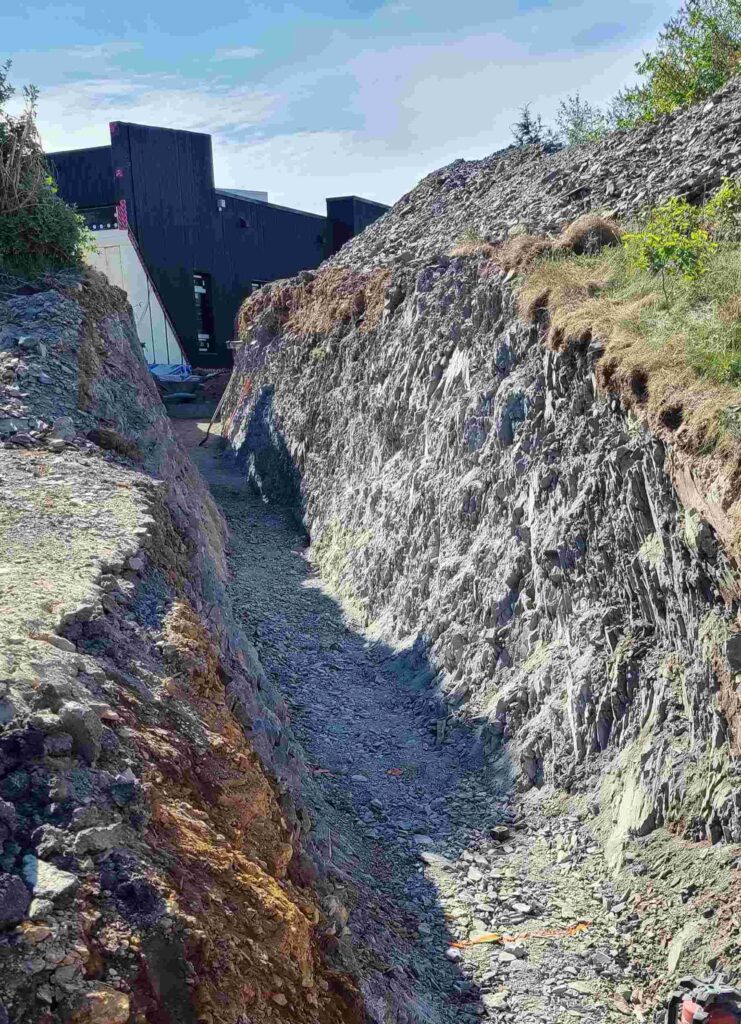
Needless to say, we worked through it – leaks, factory bugs, misunderstandings as to intent, and so forth.
Based on reader comments, I will ultimately try to explain certain choices and decisions as they pertain to services. A broad range of technological options are available, and naturally, they come with a price tag. I did not have a bottomless pit of cash to throw at this project, so, like many of you, I needed to determine what things made economic sense. Some items are simply “wants” as opposed to “needs” and, oh well, I’m paying for some luxuries. Finally, certain systems that I once thought were essential, or certainly desirous, have been thrown out as, lo and behold, they failed to pass muster.
I promise to get to all that in time, and rightly or wrongly, share my decisions.
This post will focus on water and sewer – another positively riveting topic, I know. But I will also need to bring you up to speed because frankly, finishing the project was a bit crazy, and required constant attention / vigilance on my part.
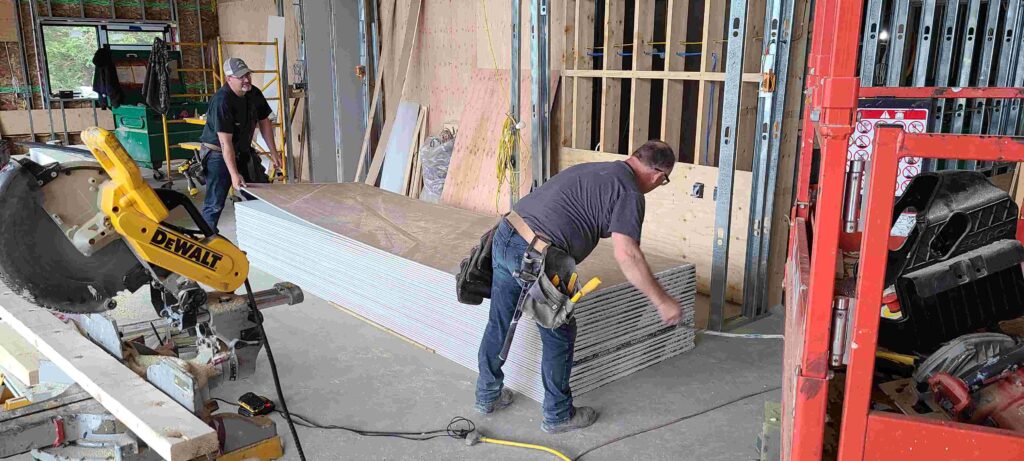
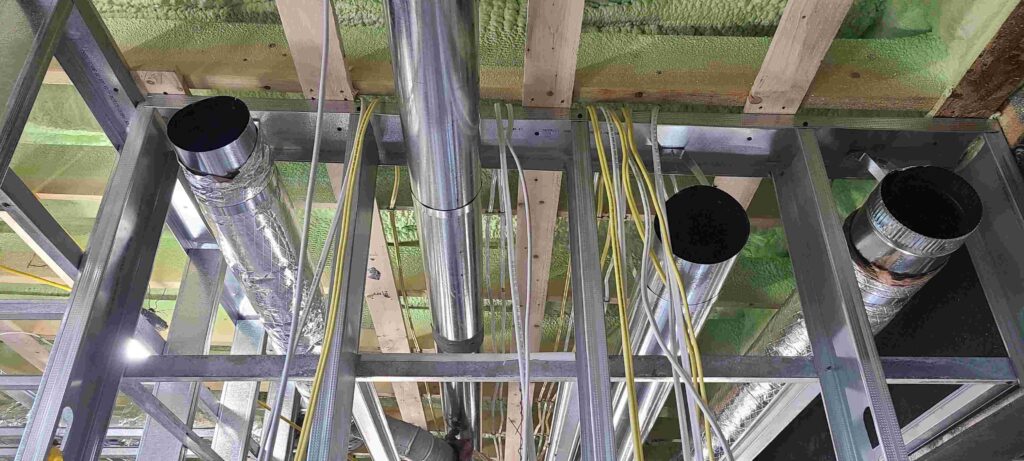
Mechanical and electrical rough-in work was ongoing throughout most of last fall. What happened inside the house started out as fairly routine: ductwork run, hot and cold water lines installed, electrical wire pulled. At that time, what happened outside the house was rather more extraordinary because of the nature of the buried services.
Water and sewer services are now available in the town where I am situated but weren’t when my father first built on this property. He installed a septic field and had an artesian well drilled. I am not a fan of the former as their sustainable quotient is questionable. The latter however, is a wonderful luxury. The well is over 100 feet deep and has a considerable yield of sparkling, clear water. I decided to retain the well even though I have had to upgrade it based on its 40-year age.
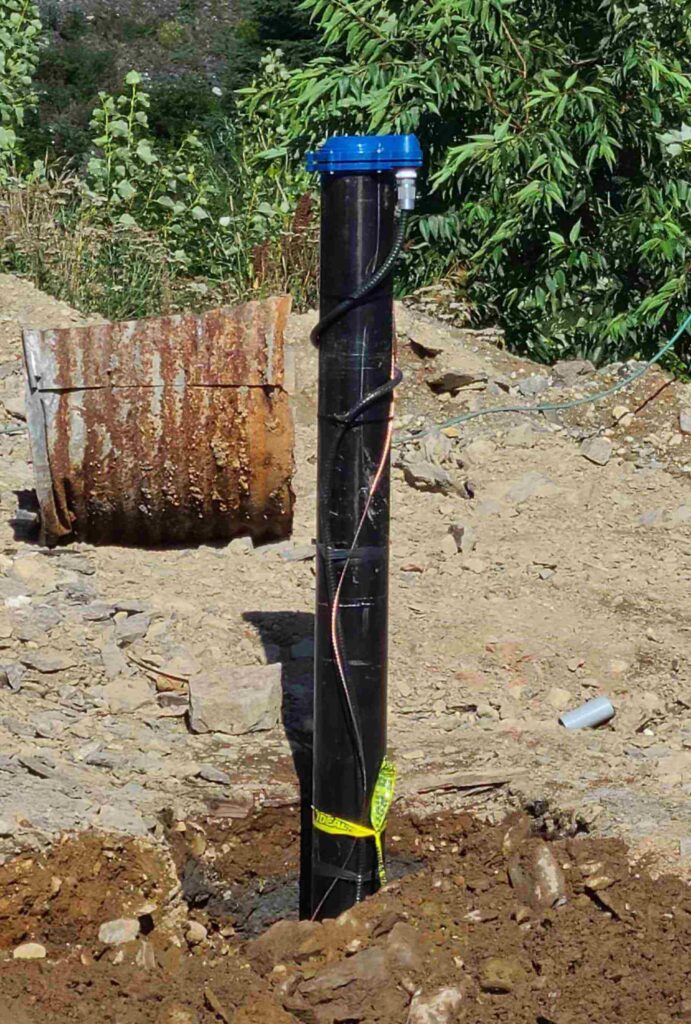
Because I had to trench the sewer line out to the street invert anyway, I decided to also install a waterline to bring town water to the house. With the appropriate interior valve arrangement, town water could be connected to my exterior hose bibs, thereby ensuring a reliable supply for watering gardens and washing things like cars and our Irish Wolfhounds. People who have wells (surface or artesian) know that these activities can quickly run a well dry.
Water for drinking, washing and flushing will be supplied from the existing well – a decision based on a history of water shutdowns in the town and an inferior (colour / taste) product by comparison.
The service trench proved to be rather costly as (of course) the route chosen to the street runs into some serious shale bedrock that measured twelve feet deep at one point! Call in the rockbuster. Indeed, we are again reminded that this is indeed Newfoundland. I refer you back to the first picture in this post!
After about ten days of rock pounding and shale excavation we reached the street roughly 150 feet from the house. Of course, there was some serious landscape damage but that’s part of the price with which we shall have to come to terms. The four-inch poly sewer line was installed (aqua colour) together with a one-inch Pex water service (blue colour). I asked my team to also install a polyethylene “dry” electrical conduit (gray colour) even though I’m not sure what I will use it for at this point. Landscape or entry lighting perhaps. As my grandfather used to say: “Better to have than be looking for it.”
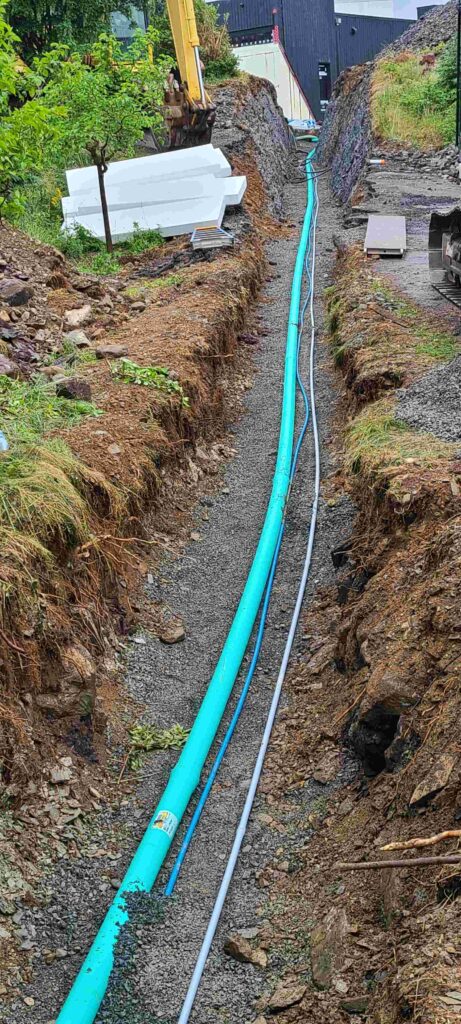
I will never dig another similar trench!
Martin Hammond drilled the original well on the property for my father. He was more than happy to rework the installation with a new foot pump and all new electrical. Because the old installation was buried (we actually had one heck of a job to find it) an extension casing was added to bring it above the surrounding grade. In the Utility Room, the well installation was completed with new controls, expansion tank, pressure gauge and filter.
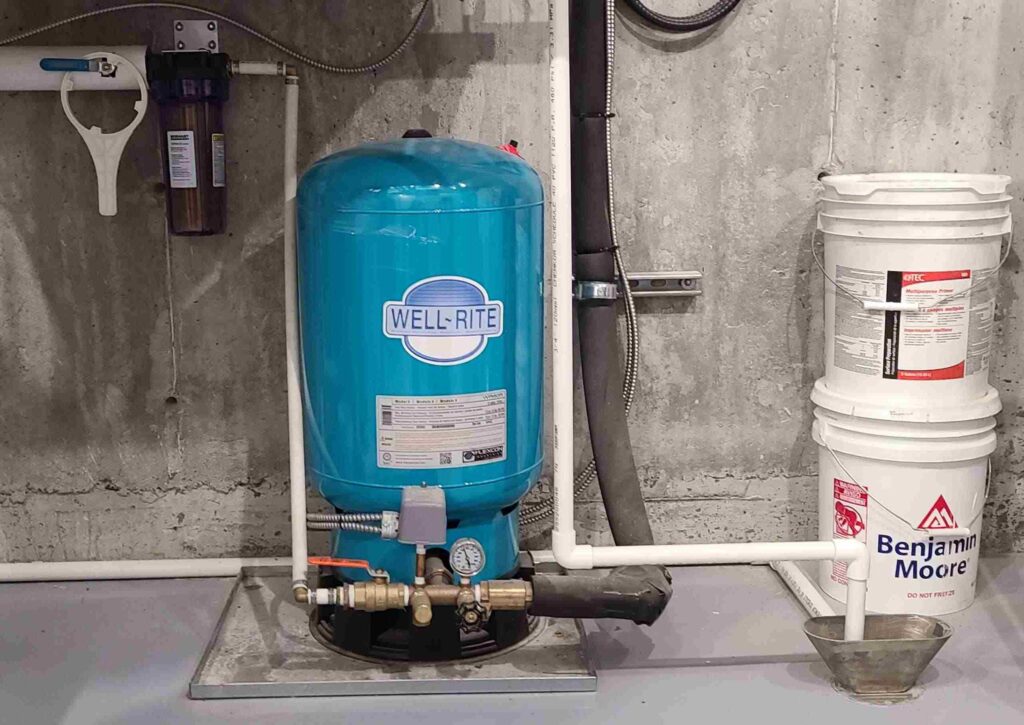
Because an electrical trench had been dug from the house to the garage to facilitate the underground electrical service, it offered the possibility of waterline and hose bib installed in the vicinity of the garage and greenhouse. I was adamant about this because with previous houses I have owned, a hose was always trailing across the driveway.
We ran a pex waterline from the house to the far side of the garage. The garage is neither heated nor insulated, so there was no point in installing a hose bid attached to it as it would simply freeze in the winter. Crawford’s plumbing supplies brought in a frost-free ground hydrant for me. This unit can be installed anywhere as the water connection (via the trench) is buried well below the frost line and includes a vacuum that empties the vertical stem into a rock bed at the connection. Made by Prier (USA) it is typically used for watering animals in pastures. I now have all the water I need, anytime of the year, for the garage and greenhouse.
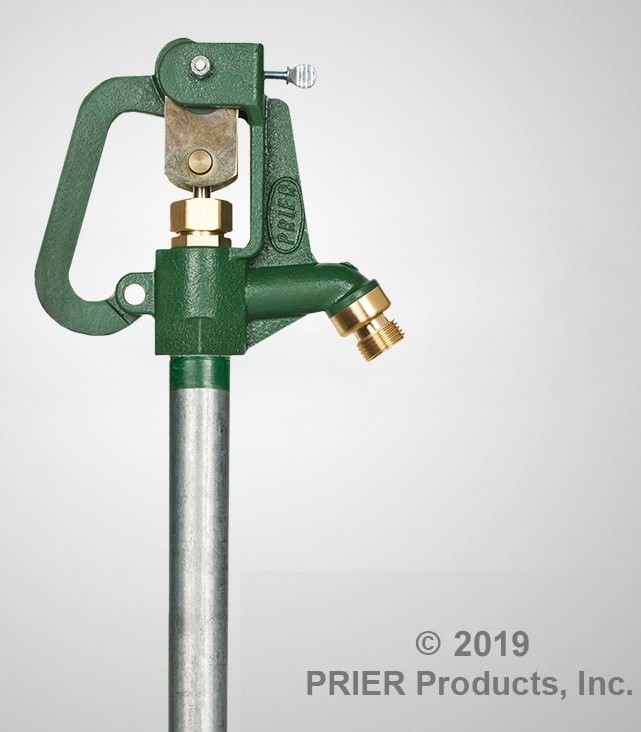
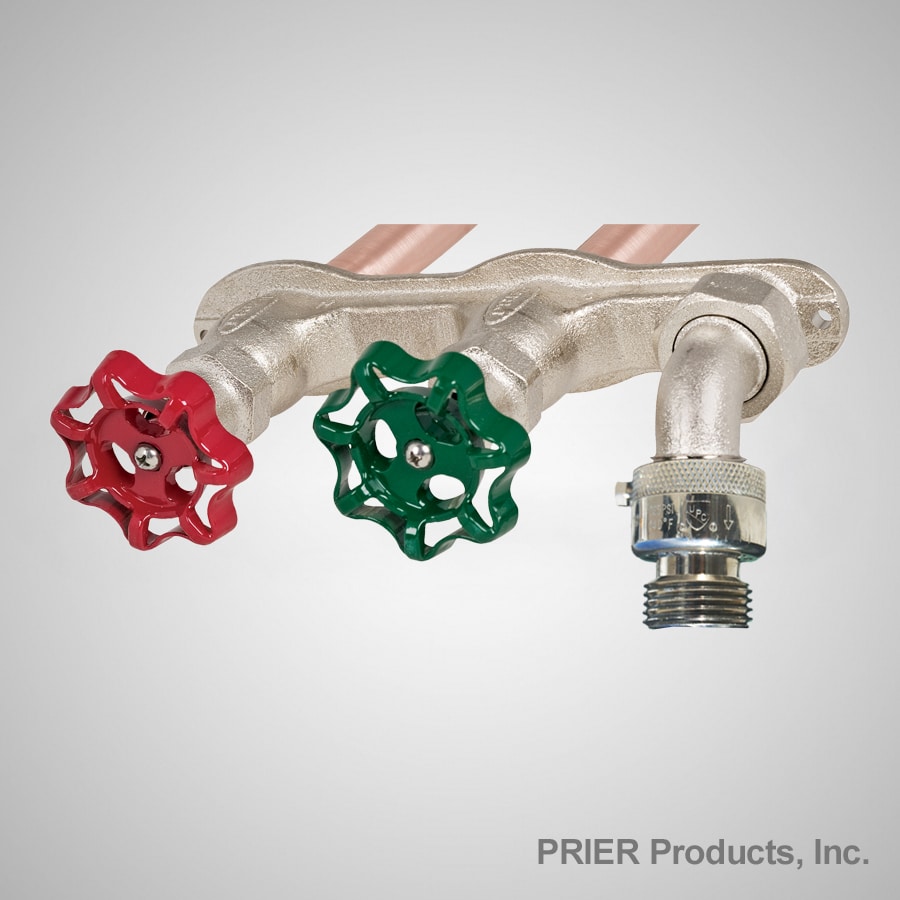
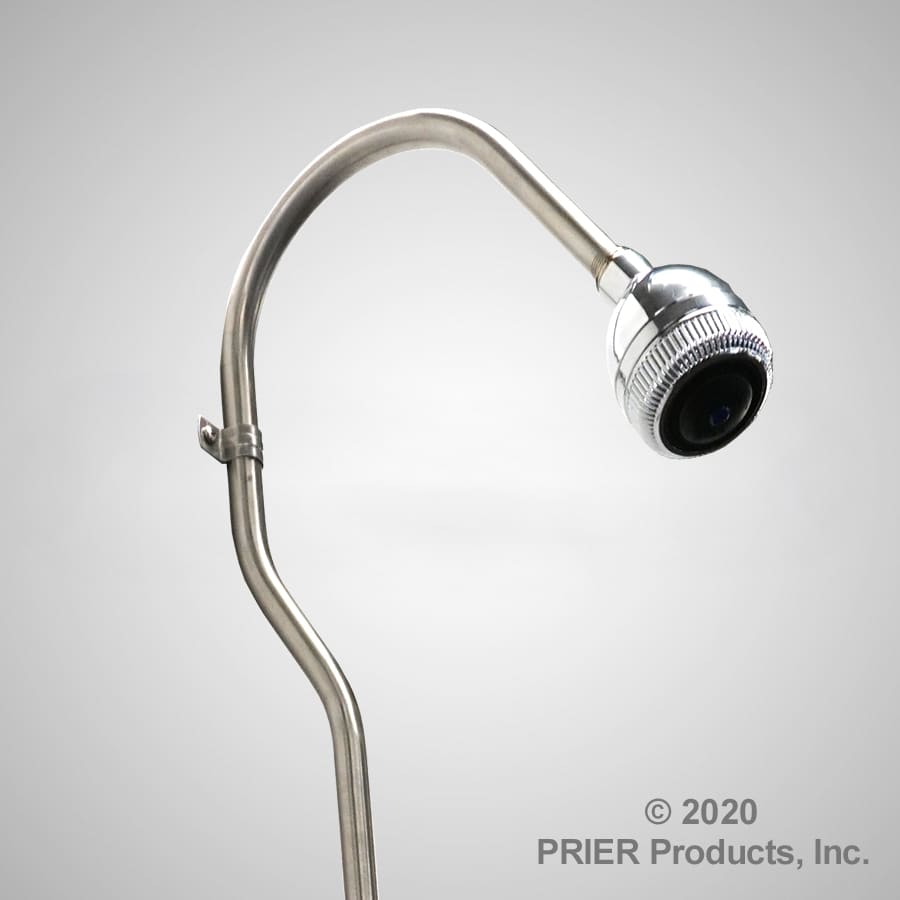
As I said previously, I will use town water for exterior hose bibs. Thanks to the diligence of my plumbers, they ran a dedicated line for this purpose from the Utility Room out to the opposite side of the house where a utility hose bib is located plus an exterior shower. The shower (also by Prier) has a mixing valve for hot water (run off the well) as well as cold. Now we can wash the Wolfhounds and rinse the grandchildren whenever they come up from the sandy beach!
One of the benefits of having water from both the town and the well on site is flexibility. In the event of a power outage (the water pump is electric) I can simply close the well valve and open the valve that feeds the town water into the domestic supply. This way, I am not solely dependent on electricity for water.
I do not need to go into any detail as to all the other plumbing aspects of the project. They are all standard items and subject to personal taste and economics. However, some of the choices I made are worth examining under this post heading.
Some of my hot/cold water runs are quite lengthy: largely the result of single storey house design. You may recall that 100% accessibility was a paradigm for this project – and we have achieved this, even with the exterior! (I will show you this later.)
There is an option to install hot water lines as a continuous loop as opposed to simply terminating the line at each fixture. The loop is fitted with a recirculation pump. This keeps the hot water moving at all times, carrying it back to the domestic hot water tank for reheating. The luxury is never having to run the hot water and wait for it to heat up.
My research seems to suggest that unless you are paying for water (metered use) energy/cost of running the recirculation pump year-round is greater than energy/cost of hot water cooling off in the pipes when there is no demand for it. Therefore, I opted not to have hot water recirculated. It simply isn’t justified against the energy required to pump and heat the water. If I lived in California, the situation would be different.
Besides. I am retired. I am happy enough the run the shower for a few minutes before I get in. I’m not in a rush anymore. Your situation may be different. The margins are, frankly, not that great.
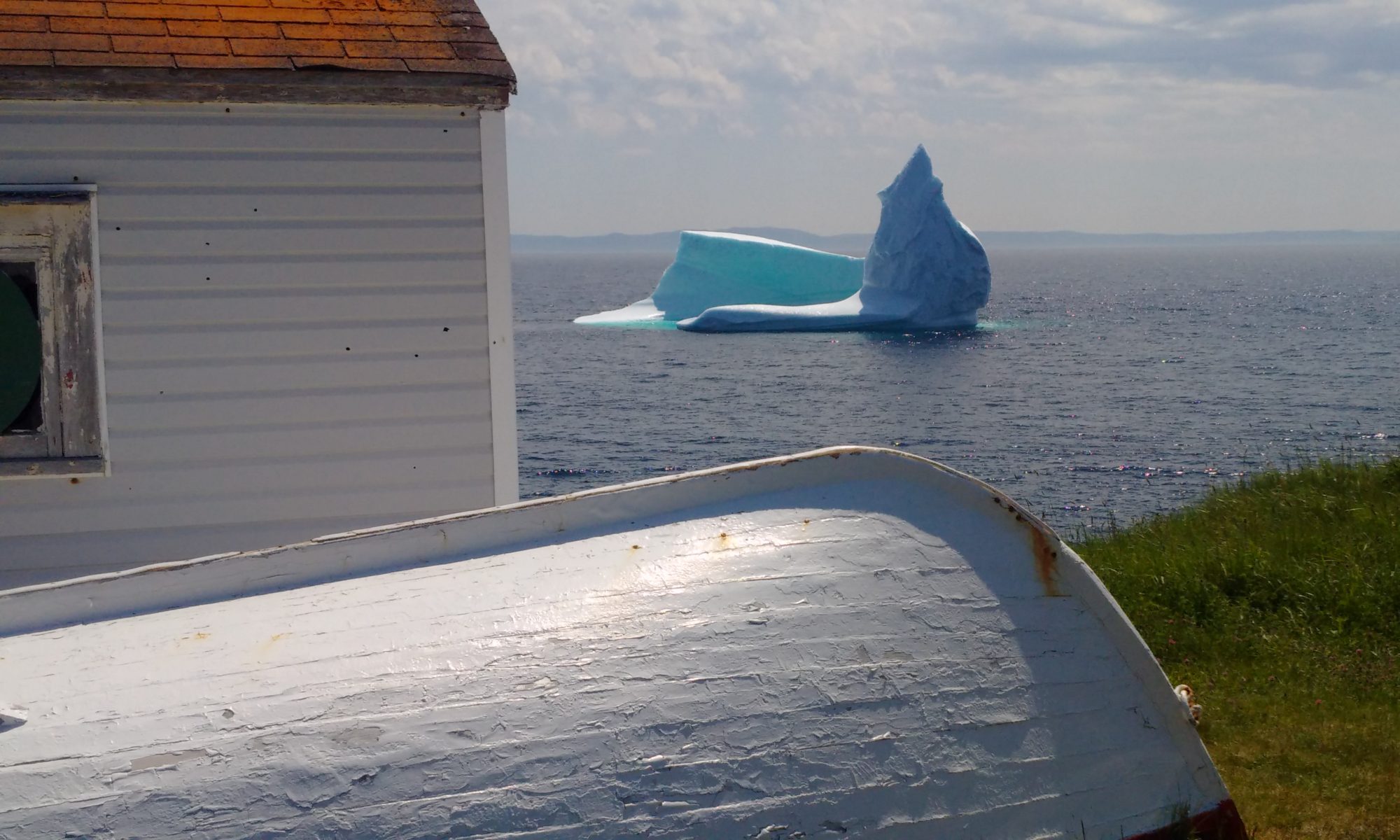
Well, what a coincidence. Just a few days ago I was wondering what happened, as we didn’t have updates for a long time (6 mos I just learned!).
Glad to see the first of the new updates…Looking ahead to reading more.
Thank you.
The last 10% of the project takes 90% of the effort. There were days when I wondered why I had started down this road at all. But Now that I am in the house, I have few regrets. Now I can get back to finishing this blog and my second novel.
Quite the trench, Jim.
Even seeing it with my own eyes did not make it any less unreal, Ken.
It was just last week I was thinking about your blog. Happy to see it resurrected. Not many writers could make me read about water and sewer. Hope the next posting is soon!